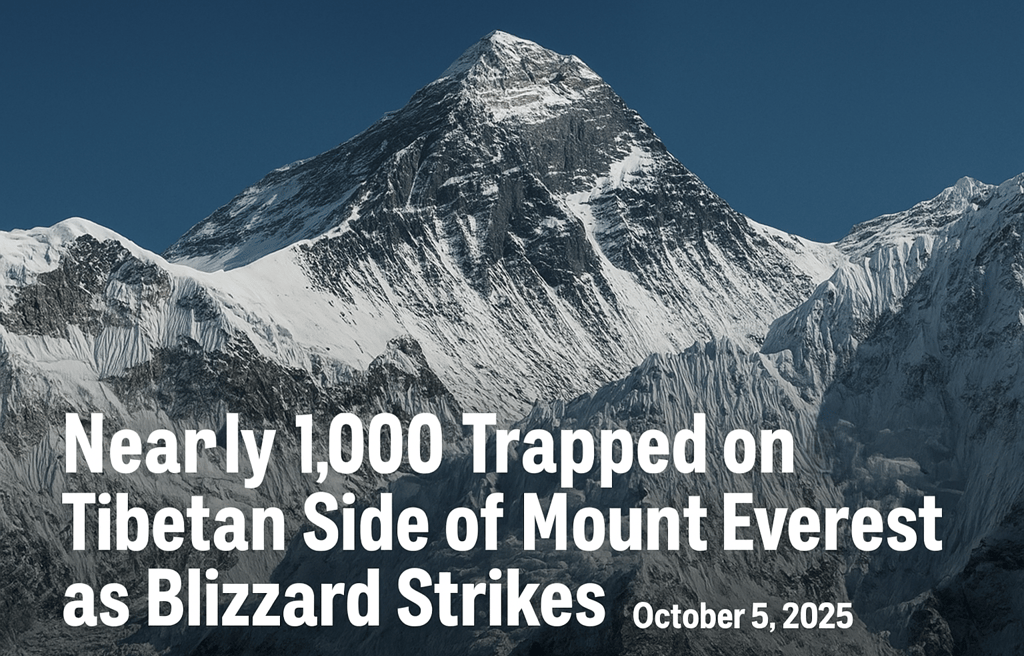Nearly 1,000 Trapped on Tibetan Side of Mount Everest as Blizzard Hits — October 5, 2025
A massive blizzard traps nearly 1,000 people on Tibet’s side of Mount Everest. Rescues underway amid freezing temperatures and blocked routes.
Raja Awais Ali
10/5/20252 min read


Nearly 1,000 People Trapped on Tibetan Side of Mount Everest as Blizzard Strikes — October 5, 2025
A powerful blizzard struck the Tibetan side of Mount Everest on October 5, 2025, trapping nearly 1,000 people — including tourists, climbers, and local workers — in one of the most dangerous weather events the region has faced in recent years.
According to Chinese and Tibetan authorities, heavy snowfall and fierce winds swept across the eastern slope of the world’s highest mountain, cutting off access routes and isolating several base camps at altitudes around 4,900 meters (16,000 feet). Temperatures reportedly dropped to about –15 °C, creating life-threatening conditions for those stranded.
Rescue operations are underway, led by Tibet’s emergency response teams, local villagers, and military helicopters. Officials confirmed that several groups have been evacuated to safety, though hundreds remain stuck because of blocked mountain trails and collapsed tents. Rescue crews are using snow-clearing machines and drones to locate missing people in snow-covered areas.
The Everest Scenic Area management has temporarily suspended all tourist entries and ticket sales until conditions improve. Authorities have also warned trekking companies and climbers to postpone expeditions.
Eyewitnesses said the storm hit with little warning. Some climbers posted on social media that their tents were destroyed by powerful gusts and thick snow, leaving them exposed to freezing temperatures. Many stranded individuals reportedly face shortages of food and medical supplies.
Meteorologists noted that the combination of sharp temperature drops, strong winds, and thin air has turned the eastern side of Everest into a high-risk zone. Experts warned that climate change may be increasing the frequency and intensity of extreme weather in the Himalayas, posing greater risks to mountaineers and local communities.
The Chinese government has deployed additional helicopters and medical teams from Lhasa to assist in the evacuation effort. However, officials acknowledged that rugged terrain and poor visibility are slowing progress. Temporary shelters are being set up to provide blankets, hot meals, and medical aid to those rescued.
So far, no fatalities have been officially confirmed, but authorities fear prolonged exposure to freezing temperatures could cause hypothermia or frostbite among those still stranded. Rescue teams are racing against time as snowfall is expected to continue for another 24 hours.